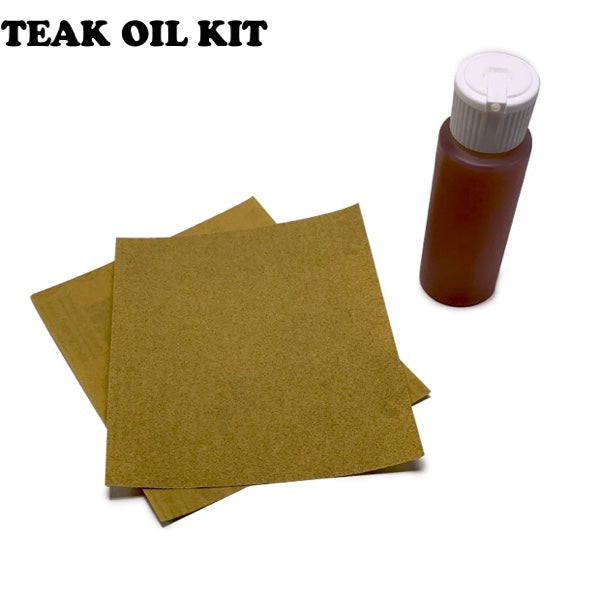
Treating and Maintaining Wooden Spearguns
Treating and Maintaining Wooden Spearguns
Maintaining wooden spearguns sounds like a daunting task, but you actually just need a few simple tools and a small amount of effort. Doing a small amount of maintenance goes a long way in the longevity and appearance of your gun.
Why Maintenance is Important
The biggest concern in terms of the maintenance and longevity of your gun is that water will get into the wood and cause it to expand unevenly, which results in the wood warping. This specifically occurs because the grains in the wood expand at different rates which causes it to twist and turn, which turns the speargun from a straight instrument into something that looks like it can shoot around corners. Fortunately, there are ways to prevent this from occurring! The two primary methods of protecting your wooden speargun from water intrusion are penetrating oils and epoxy.
Teak Oil
The most user-friendly method of speargun maintenance is to use some type of penetrating oil. The most commonly recommended is teak oil. It has been used for ages in marine application and many wooden spearguns are made out of teak. The method of applying teak oil is very simple. All you need to do is lightly sand the speargun with some 200 or 300 grit sand paper. After that you simply clean off the speargun with acetone, paint thinner, or denatured alcohol to remove any sawdust. Finally, you use a lint free rag and apply several applications of teak oil. A small amount of teak oil goes a long way. Maintaining your speargun once a season can take your speargun from looking like drift wood to looking brand new.
Benefits of Epoxy
Epoxy is usually a two-part mix of resin and hardener which are mixed together and applied to the outside surfaces of spearguns to prevent any water intrusion. There are many challenges with epoxy coats and just as many solutions. The benefit to epoxy is that if it is applied properly, it works perfectly to prevent any water intrusion. Another benefit to properly applied epoxy is that it is truly beautify when it is complete. With the proper number of epoxy coats of the correct kind of clarified epoxy are applied, your speargun looks like it is encased in a sheet of glass.
How to Apply Epoxy
The real challenge with epoxy is that properly recoating the speargun requires the removal of the previous epoxy. This requires lots of sanding, and you need to make the speargun underneath look as perfect as possible because any imperfections in the speargun will be encased in epoxy and be very evident.
Handling
After sanding, the process does not become any simpler. You will need to thoroughly clean the speargun, like before applying teak oil, but afterwards you need to be sure you do not touch the speargun with your bare hands until the final coat of epoxy has cured. This required latex or rubber gloves while handling the speargun. If you use your bare hands the oils on your hands can become encased in the epoxy and create what have been called ‘Fish Scales’ on the speargun.
You will have to apply several coats of epoxy and allow each coat to cure between new applications. Any imperfections between coats can be removed by sanding the speargun with extremely fine steel wool, then cleaning it off with acetone, paint thinner, or denatured alcohol. After it is cleaned off and imperfections are removed, you can re-apply more epoxy.
Coating
Typically, between five to seven coats of ultra-clarified epoxy give the speargun the encased-in-glass appearance people are looking for in an epoxy coated speargun. Note the specific ultra-clarified type of epoxy. If you do not specifically use ultra-clarified epoxy, it will yellow with extended exposure to sunlight.As a result of the increased effort, epoxy is challenging to work with, but don't let it scare you. This post is simply trying to illustrate the challenges that come with this method. For some types of wood spearguns (anything other than teak), the benefits of epoxy coating dramatically outweigh the challenges.
